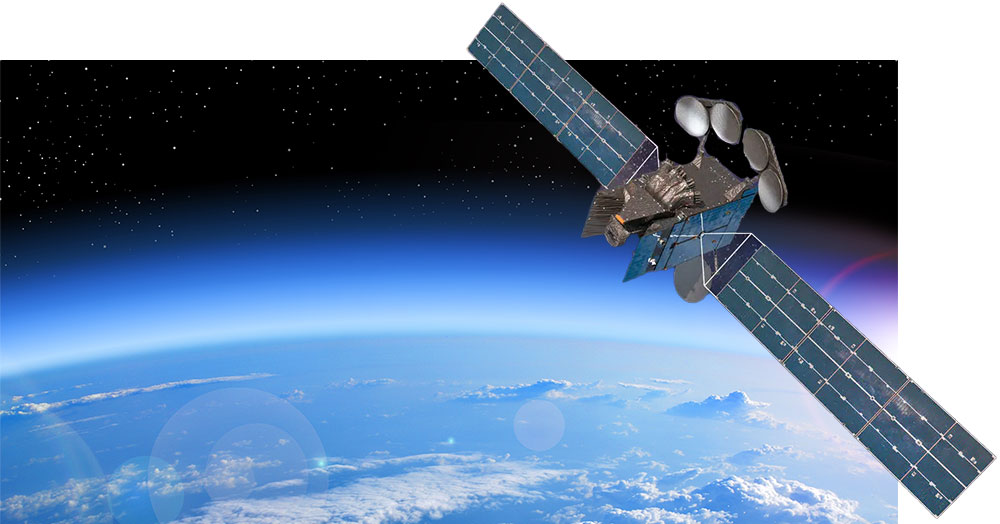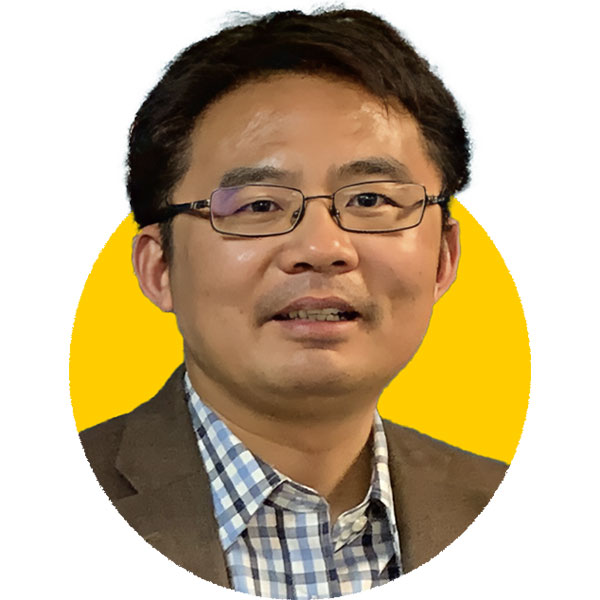Iowa Engineer’s NASA Instrument Probes Atmospheric Pollutants
 ILLUSTRATION COURTESY NASA
NASA's TEMPO instrument is the first space-based instrument to monitor air pollutants hourly across North America.
ILLUSTRATION COURTESY NASA
NASA's TEMPO instrument is the first space-based instrument to monitor air pollutants hourly across North America.
Even as a boy in China, Jun Wang noticed how shifting weather patterns could cause his parents’ harvests to fail or flourish. Eventually, his studies in atmospheric science also taught him that the average person needs to breathe about 20 pounds of air each day. Such insights fueled his interest in atmospheric composition and air pollutants—and inspired his contributions to a NASA research team that made it onto Time magazine’s list of 2023’s best inventions.
 PHOTO COURTESY UI COLLEGE OF ENGINEERING
Jun Wang, James E. Ashton Professor of Engineering
PHOTO COURTESY UI COLLEGE OF ENGINEERING
Jun Wang, James E. Ashton Professor of Engineering
Wang, who is the James E. Ashton Professor of Engineering at the University of Iowa College of Engineering, is Iowa’s lead investigator on NASA’s Tropospheric Emissions: Monitoring Pollution (TEMPO) project. Tethered to a satellite cruising 22,000 miles above Earth, TEMPO is a space instrument launched in August 2023 that is revolutionizing scientists’ understandings of air pollution.
“Last summer, we saw hazy skies because of Canadian fire emissions,” says Wang. “TEMPO can help us plan when and where to go outside, so we can avoid as much air pollution as possible.”
Kelly Chance, a senior physicist at the Harvard and Smithsonian Center for Astrophysics, heads the joint research venture, which involves approximately 20 principal investigators across the nation as well as a handful of other UI contributors across campus. Wang, who began teaching at Iowa in 2016, has devoted more than a decade to TEMPO.
The group’s invention is a UV-visible spectrometer that is the first to provide round-the-clock measurement of the air pollutants—such as sulfur oxide, nitrogen oxide, and particulates—drifting above North America, from Mexico City to the Canadian oil fields. TEMPO can send researchers hourly results, in 3D resolution, and zoom in to Earth as close as street level. According to Time, such innovative technology is “increasingly urgent, given global declines in air quality and bouts of wildfire smoke.”
“Collaboration is the key to tackling big problems such as air pollution and climate change.” —Jun Wang
In fact, a recent study by the National Integrated Drought Information System estimated that human-caused climate change contributed to a more than 320% increase in wildfires from 1996–2021—and predicts a further increase, ranging from 3% to 52%, in the decades ahead.
Wang hopes his scientific pursuits can help mitigate the effects of such dire projections. After immigrating to the United States in 1999 for graduate school, he participated in a highly competitive NOAA climate and global change postdoctoral fellowship program at Harvard University. Today, as professor and interim chair of the UI Department of Chemical and Biochemical Engineering—and assistant director of the Iowa Technology Institute—he explores the ways in which aerosols affect air quality, weather, and climate.
Wang continues his TEMPO-related research and currently is working with Iowa engineering students and faculty to develop a new algorithm for mapping the vertical distribution of smoke particles.
“Collaboration is the key to tackling big problems such as air pollution and climate change,” he says. “Together, we can benefit society.”
